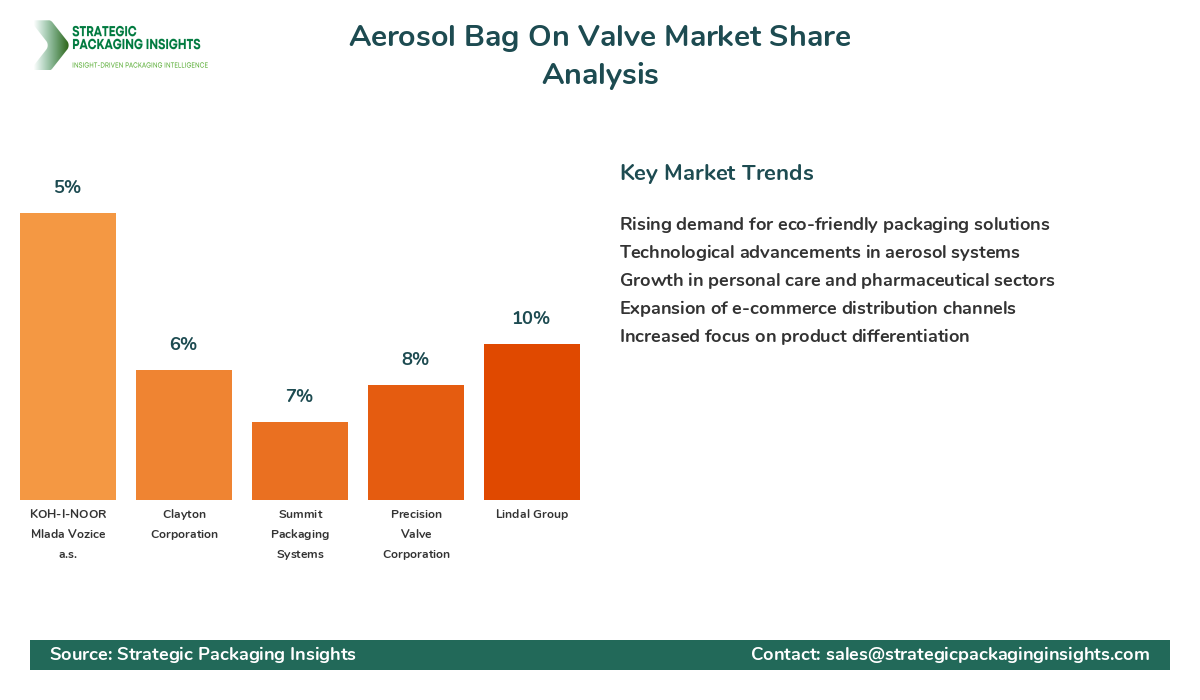- Home
- Advanced Packaging
- Aerosol Bag On Valve Market Size, Future Growth and Forecast 2033
Aerosol Bag On Valve Market Size, Future Growth and Forecast 2033
Aerosol Bag On Valve Market Segments - by Product Type (Standard BOV, Aerosol BOV), Application (Personal Care, Household, Industrial, Food & Beverages, Pharmaceuticals), Material (Aluminum, Steel, Plastic), and End-User (Manufacturers, Distributors, Retailers) - Market Dynamics, Growth Opportunities, Strategic Drivers, and PESTLE Outlook (2025–2033)
Aerosol Bag On Valve Market Outlook
The Aerosol Bag On Valve market was valued at $1.2 billion in 2024 and is projected to reach $2.5 billion by 2033, growing at a CAGR of 8.5% during the forecast period 2025–2033. This market is experiencing significant growth due to the increasing demand for sustainable and efficient packaging solutions. The bag-on-valve technology offers numerous advantages, such as improved product evacuation, reduced propellant use, and enhanced product shelf life, which are driving its adoption across various industries. The personal care and pharmaceutical sectors are particularly contributing to the market's expansion, as these industries seek packaging solutions that ensure product integrity and user convenience.
Report Scope
| Attributes | Details |
| Report Title | Aerosol Bag On Valve Market Size, Future Growth and Forecast 2033 |
| Base Year | 2024 |
| Historic Data | 2017-2023 |
| Forecast Period | 2025-2033 |
| Number of Pages | 113 |
| Product Type | Standard BOV, Aerosol BOV |
| Application | Personal Care, Household, Industrial, Food & Beverages, Pharmaceuticals |
| Material | Aluminum, Steel, Plastic |
| End-User | Manufacturers, Distributors, Retailers |
| Customization Available | Yes* |
Opportunities & Threats
The Aerosol Bag On Valve market presents numerous opportunities, primarily driven by the growing consumer preference for eco-friendly packaging solutions. As environmental concerns rise, industries are increasingly adopting sustainable practices, and the bag-on-valve technology aligns perfectly with this trend. This technology reduces the carbon footprint by minimizing the use of propellants and ensuring nearly complete product evacuation, which reduces waste. Additionally, the increasing demand for personal care and pharmaceutical products, which require precise and hygienic dispensing, is further propelling the market growth. The versatility of bag-on-valve systems in accommodating various product viscosities and formulations also opens up new avenues for innovation and application across different sectors.
Another significant opportunity lies in the technological advancements and innovations within the Aerosol Packaging industry. Companies are investing in research and development to enhance the functionality and efficiency of bag-on-valve systems. Innovations such as the integration of smart packaging technologies, which provide real-time data on product usage and shelf life, are gaining traction. These advancements not only improve the user experience but also offer manufacturers valuable insights into consumer behavior and product performance. Furthermore, the expansion of e-commerce and online retailing is creating new distribution channels for aerosol products, thereby increasing the market reach and accessibility of bag-on-valve systems.
Despite the promising opportunities, the Aerosol Bag On Valve market faces certain challenges that could hinder its growth. One of the primary restrainers is the high cost associated with bag-on-valve systems compared to traditional aerosol packaging. The initial investment required for adopting this technology can be a barrier for small and medium-sized enterprises. Additionally, the complexity of the manufacturing process and the need for specialized equipment can pose challenges for manufacturers looking to transition to bag-on-valve systems. Regulatory compliance and stringent safety standards in the aerosol industry also add to the operational costs and complexities, potentially impacting the market's growth trajectory.
The competitive landscape of the Aerosol Bag On Valve market is characterized by the presence of several key players who are actively contributing to the market's growth and development. These companies are focusing on strategic initiatives such as mergers and acquisitions, partnerships, and product innovations to strengthen their market position. The market is moderately fragmented, with a mix of established players and emerging companies vying for market share. The leading companies in this market are leveraging their extensive distribution networks and technological expertise to cater to the growing demand for bag-on-valve systems across various industries.
One of the major players in the Aerosol Bag On Valve market is AptarGroup, Inc., which holds a significant market share due to its comprehensive product portfolio and strong global presence. The company is known for its innovative packaging solutions and has been at the forefront of developing sustainable and efficient aerosol systems. Another key player is Coster Group, which is renowned for its advanced Aerosol Valve technologies and extensive experience in the packaging industry. Coster Group's commitment to research and development has enabled it to offer cutting-edge solutions that meet the evolving needs of consumers and manufacturers.
Lindal Group is another prominent company in the Aerosol Bag On Valve market, recognized for its expertise in aerosol dispensing technology. The company's focus on sustainability and innovation has positioned it as a leader in the market, with a strong emphasis on developing eco-friendly packaging solutions. Precision Valve Corporation is also a notable player, known for its high-quality Aerosol Valves And Actuators. The company's dedication to quality and customer satisfaction has earned it a loyal customer base and a competitive edge in the market.
Other significant players in the market include Summit Packaging Systems, Clayton Corporation, and KOH-I-NOOR Mlada Vozice a.s. These companies are actively investing in research and development to enhance their product offerings and expand their market presence. The competitive landscape is further enriched by the presence of regional players who are catering to the specific needs of local markets. Overall, the Aerosol Bag On Valve market is witnessing intense competition, with companies striving to differentiate themselves through innovation, quality, and customer-centric approaches.
Key Highlights Aerosol Bag On Valve Market
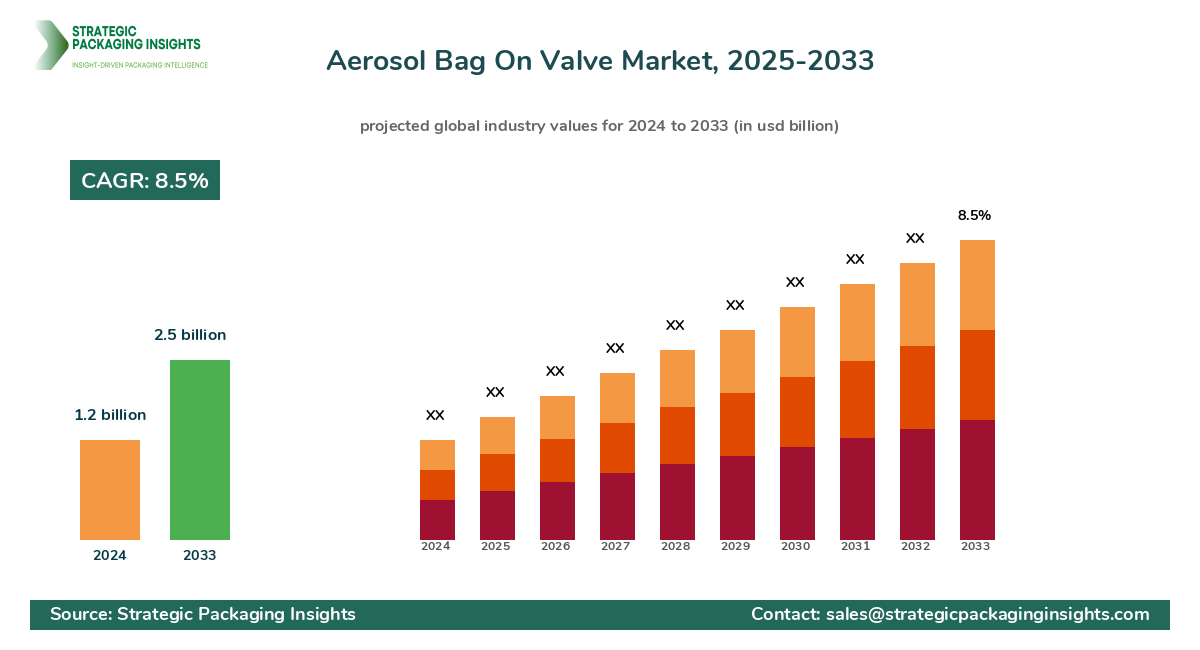
- Increasing demand for eco-friendly and sustainable packaging solutions.
- Technological advancements in aerosol packaging systems.
- Growing adoption in personal care and pharmaceutical industries.
- Expansion of e-commerce and online retailing channels.
- High initial investment costs as a market restrainer.
- Regulatory compliance and safety standards impacting market dynamics.
- Emergence of smart packaging technologies.
- Intense competition among key market players.
- Focus on research and development for product innovation.
- Regional players catering to local market demands.
Top Countries Insights in Aerosol Bag On Valve
The United States is one of the leading markets for Aerosol Bag On Valve systems, with a market size of approximately $400 million and a CAGR of 7%. The country's strong demand for personal care and pharmaceutical products, coupled with a focus on Sustainable Packaging, drives the market growth. The presence of major industry players and a well-established distribution network further bolster the market's expansion.
Germany is another significant market, valued at around $300 million, with a CAGR of 6%. The country's robust manufacturing sector and emphasis on innovation and quality contribute to the growth of the Aerosol Bag On Valve market. Germany's stringent environmental regulations also encourage the adoption of eco-friendly packaging solutions, supporting market development.
China's Aerosol Bag On Valve market is experiencing rapid growth, with a market size of $250 million and a CAGR of 10%. The country's expanding middle class and increasing consumer spending on personal care and household products drive the demand for Advanced Packaging solutions. Additionally, China's focus on reducing environmental impact aligns with the benefits offered by bag-on-valve systems.
In the United Kingdom, the market is valued at approximately $200 million, with a CAGR of 5%. The country's strong retail sector and growing demand for convenient and sustainable packaging solutions fuel the market growth. The presence of innovative packaging companies and a focus on product differentiation further enhance the market's prospects.
Brazil is also emerging as a key market, with a size of $150 million and a CAGR of 8%. The country's growing consumer base and increasing awareness of sustainable packaging solutions drive the demand for Aerosol Bag On Valve systems. Brazil's expanding personal care and household product industries further contribute to the market's growth.
Value Chain Profitability Analysis
The value chain of the Aerosol Bag On Valve market involves several key stakeholders, each contributing to the overall profitability and efficiency of the industry. The primary stakeholders include raw material suppliers, manufacturers, distributors, and retailers. Raw material suppliers provide essential components such as aluminum, steel, and plastic, which are crucial for the production of bag-on-valve systems. Manufacturers play a pivotal role in transforming these raw materials into finished products, utilizing advanced technologies and specialized equipment.
Distributors and retailers are responsible for ensuring the availability and accessibility of bag-on-valve products to end consumers. They play a critical role in the value chain by facilitating the distribution and marketing of products across various channels. The profitability of each stakeholder varies based on factors such as production costs, pricing strategies, and market demand. Manufacturers typically capture a significant share of the market value due to their role in product development and innovation.
Digital transformation is reshaping the value chain by introducing new revenue opportunities and enhancing operational efficiency. The integration of digital technologies, such as data analytics and automation, enables stakeholders to optimize their processes and improve decision-making. This transformation is particularly evident in the distribution and retail segments, where e-commerce platforms and online marketing strategies are expanding market reach and driving sales growth. Overall, the value chain profitability analysis highlights the importance of collaboration and innovation in maximizing revenue and sustaining market competitiveness.
Evolving Market Dynamics (2018–2024) and Strategic Foresight (2025–2033)
The Aerosol Bag On Valve market has undergone significant changes between 2018 and 2024, driven by evolving consumer preferences and technological advancements. During this period, the market experienced a steady growth rate, with a CAGR of 6.5%, as industries increasingly adopted sustainable packaging solutions. The demand for personal care and pharmaceutical products, coupled with the rise of e-commerce, contributed to the market's expansion. Key market dynamics included the growing emphasis on eco-friendly packaging, advancements in aerosol technology, and the increasing importance of regulatory compliance.
Looking ahead to the forecast period of 2025–2033, the market is expected to witness accelerated growth, with a projected CAGR of 8.5%. The strategic foresight for this period highlights the continued focus on sustainability and innovation as key drivers of market growth. The integration of smart packaging technologies and the expansion of digital distribution channels are anticipated to reshape the market landscape. Additionally, the increasing demand for personalized and convenient packaging solutions is expected to drive product differentiation and innovation.
The strategic imperatives for market players during this period include investing in research and development to enhance product offerings and exploring new market opportunities. Companies are likely to focus on expanding their global presence and strengthening partnerships to capitalize on emerging trends and consumer demands. Overall, the evolving market dynamics and strategic foresight underscore the importance of adaptability and innovation in maintaining a competitive edge in the Aerosol Bag On Valve market.
Aerosol Bag On Valve Market Segments Insights
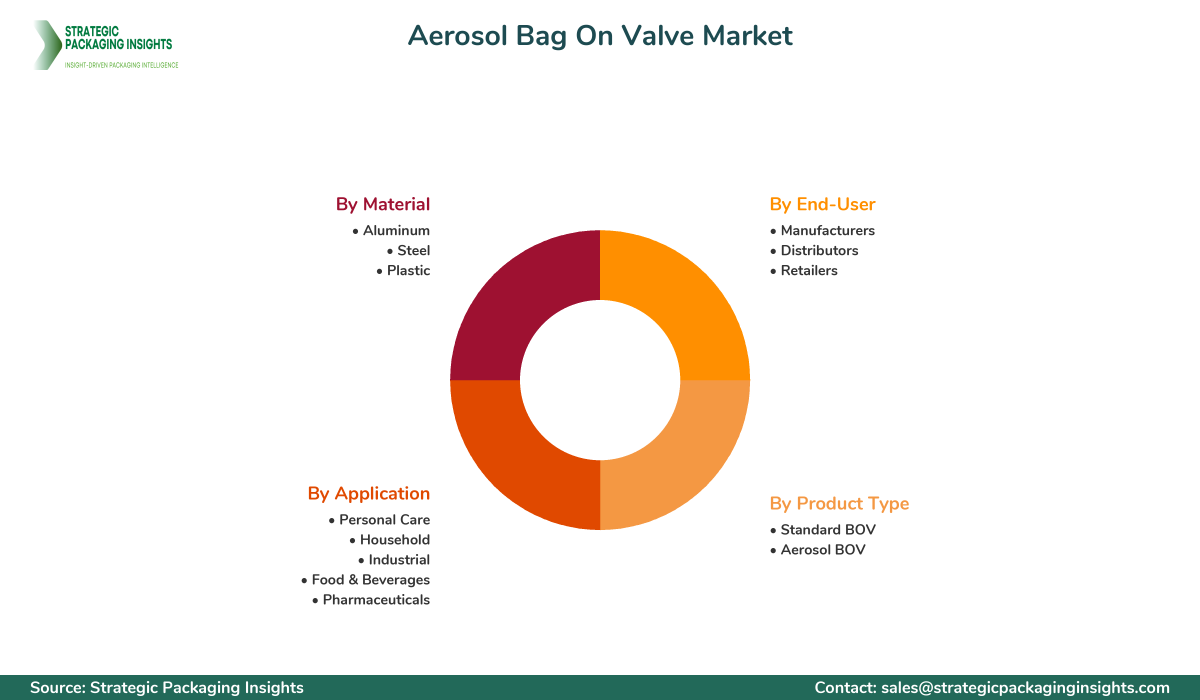
Product Type Analysis
The Aerosol Bag On Valve market is segmented into two primary product types: Standard BOV and Aerosol BOV. The Standard BOV segment is characterized by its widespread adoption across various industries due to its cost-effectiveness and versatility. This segment is driven by the increasing demand for efficient and sustainable packaging solutions, particularly in the personal care and household sectors. The Standard BOV systems offer advantages such as improved product evacuation and reduced environmental impact, making them a preferred choice for manufacturers and consumers alike.
On the other hand, the Aerosol BOV segment is gaining traction due to its advanced features and enhanced performance capabilities. This segment is particularly popular in the pharmaceutical and food & beverage industries, where precise and hygienic dispensing is crucial. The Aerosol BOV systems are designed to accommodate a wide range of product viscosities and formulations, providing manufacturers with greater flexibility and customization options. The growing focus on product differentiation and innovation is expected to drive the demand for Aerosol BOV systems in the coming years.
Application Analysis
The application segment of the Aerosol Bag On Valve market encompasses a diverse range of industries, including personal care, household, industrial, food & beverages, and pharmaceuticals. The personal care segment is one of the largest contributors to the market, driven by the increasing demand for convenient and user-friendly packaging solutions. The rise in consumer awareness regarding hygiene and product safety further fuels the adoption of bag-on-valve systems in this segment. The household segment also presents significant growth opportunities, as consumers seek efficient and sustainable packaging for cleaning and maintenance products.
The industrial segment is witnessing a steady increase in demand for bag-on-valve systems, particularly in applications requiring precise and controlled dispensing. The food & beverages segment is also experiencing growth, driven by the need for packaging solutions that ensure product freshness and extend shelf life. The pharmaceutical industry is another key application area, where the demand for hygienic and tamper-proof packaging is paramount. Overall, the diverse application landscape of the Aerosol Bag On Valve market highlights the versatility and adaptability of this packaging technology across various sectors.
Material Analysis
The material segment of the Aerosol Bag On Valve market includes aluminum, steel, and plastic, each offering distinct advantages and applications. Aluminum is the most widely used material due to its lightweight, corrosion-resistant, and recyclable properties. The demand for aluminum-based bag-on-valve systems is driven by the increasing focus on sustainability and environmental conservation. Steel is another popular material, known for its durability and strength, making it suitable for applications requiring robust packaging solutions.
Plastic materials are also gaining popularity in the Aerosol Bag On Valve market, particularly in applications where flexibility and cost-effectiveness are essential. The use of plastic materials allows for greater design flexibility and customization, enabling manufacturers to create innovative and visually appealing packaging solutions. The growing emphasis on reducing plastic waste and promoting recycling is expected to drive the demand for eco-friendly plastic materials in the coming years. Overall, the material segment of the Aerosol Bag On Valve market reflects the industry's commitment to sustainability and innovation.
End-User Analysis
The end-user segment of the Aerosol Bag On Valve market includes manufacturers, distributors, and retailers, each playing a crucial role in the market's growth and development. Manufacturers are the primary end-users, responsible for producing and supplying bag-on-valve systems to various industries. Their focus on innovation and product development is critical in meeting the evolving needs of consumers and maintaining a competitive edge in the market. Distributors play a vital role in ensuring the availability and accessibility of bag-on-valve products across different regions and channels.
Retailers are also key end-users, responsible for marketing and selling bag-on-valve products to consumers. Their role in promoting sustainable and eco-friendly packaging solutions is essential in driving consumer awareness and adoption. The growing emphasis on e-commerce and online retailing is reshaping the end-user landscape, providing new opportunities for market expansion and growth. Overall, the end-user segment of the Aerosol Bag On Valve market highlights the importance of collaboration and innovation in achieving market success.
Aerosol Bag On Valve Market Segments
The Aerosol Bag On Valve market has been segmented on the basis of
Product Type
- Standard BOV
- Aerosol BOV
Application
- Personal Care
- Household
- Industrial
- Food & Beverages
- Pharmaceuticals
Material
- Aluminum
- Steel
- Plastic
End-User
- Manufacturers
- Distributors
- Retailers
Primary Interview Insights
What are the key drivers of growth in the Aerosol Bag On Valve market?
What challenges does the Aerosol Bag On Valve market face?
How is digital transformation impacting the Aerosol Bag On Valve market?
What role do innovations play in the Aerosol Bag On Valve market?
How are companies addressing sustainability in the Aerosol Bag On Valve market?
Latest Reports

The beverage packaging market was valued at $128 billion in 2024 and is projected to reach $186 billion by 2033, growing at a CAGR of 4.2% during the forecast period 2025–2033.

The North America Freight and Logistics market was valued at $1,200 billion in 2024 and is projected to reach $1,800 billion by 2033, growing at a CAGR of 4.5% during the forecast period 2025–2033.

The Anti-Counterfeiting Packaging market was valued at $105 billion in 2024 and is projected to reach $182 billion by 2033, growing at a CAGR of 6.5% during the forecast period 2025–2033.

The Active and Modified Atmospheric Packaging market was valued at $15.2 billion in 2024 and is projected to reach $25.8 billion by 2033, growing at a CAGR of 6.5% during the forecast period 2025–2033.

The molded fiber packaging market was valued at $7.5 billion in 2024 and is projected to reach $12.3 billion by 2033, growing at a CAGR of 5.8% during the forecast period 2025–2033.

The micro packaging market was valued at $1.2 billion in 2024 and is projected to reach $2.5 billion by 2033, growing at a CAGR of 8.5% during the forecast period 2025–2033.

The Anti-counterfeit Pharmaceuticals Packaging market was valued at $80 billion in 2024 and is projected to reach $150 billion by 2033, growing at a CAGR of 7.5% during the forecast period 2025–2033.

The MDO-PE Film market was valued at $3.5 billion in 2024 and is projected to reach $5.8 billion by 2033, growing at a CAGR of 5.2% during the forecast period 2025–2033.
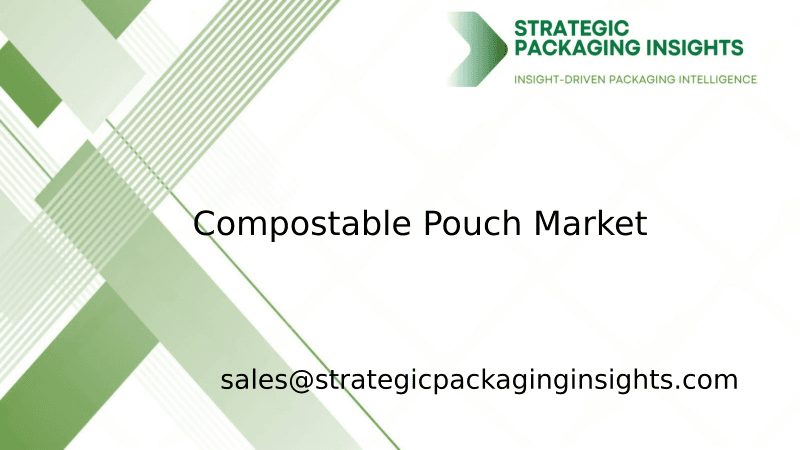
The compostable pouch market was valued at $1.2 billion in 2024 and is projected to reach $3.5 billion by 2033, growing at a CAGR of 12.5% during the forecast period 2025–2033.

The Smart Packaging market was valued at $23.5 billion in 2024 and is projected to reach $43.5 billion by 2033, growing at a CAGR of 7.2% during the forecast period 2025–2033.

The pharmaceutical glass packaging market was valued at $14.5 billion in 2024 and is projected to reach $22.3 billion by 2033, growing at a CAGR of 4.9% during the forecast period 2025–2033.

The tray liners market was valued at $1.2 billion in 2024 and is projected to reach $2.3 billion by 2033, growing at a CAGR of 6.5% during the forecast period 2025–2033.
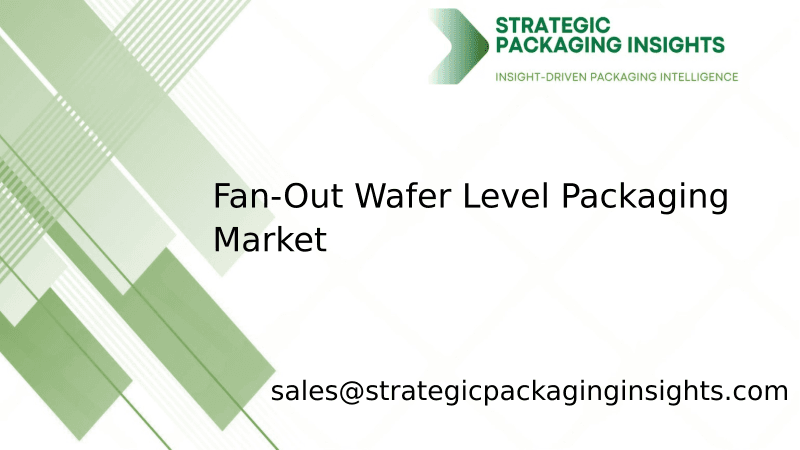
The Fan-Out Wafer Level Packaging (FOWLP) market was valued at $1.5 billion in 2024 and is projected to reach $4.2 billion by 2033, growing at a CAGR of 12.5% during the forecast period 2025–2033.

The cartoning machines market was valued at $3.5 billion in 2024 and is projected to reach $5.2 billion by 2033, growing at a CAGR of 4.5% during the forecast period 2025–2033.
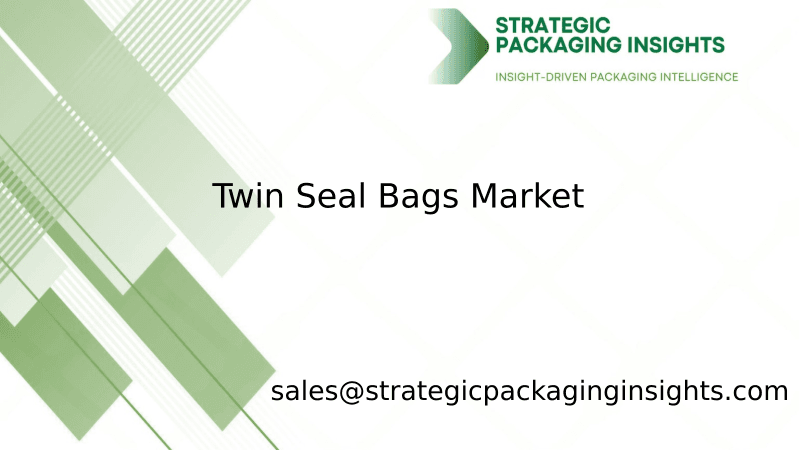
The Twin Seal Bags market was valued at $1.2 billion in 2024 and is projected to reach $2.3 billion by 2033, growing at a CAGR of 7.1% during the forecast period 2025–2033.

The Polyvinyl Alcohol (PVA) Films market was valued at $3.5 billion in 2024 and is projected to reach $5.8 billion by 2033, growing at a CAGR of 5.2% during the forecast period 2025–2033.

The Ready-To-Eat Product Packaging market was valued at $95 billion in 2024 and is projected to reach $145 billion by 2033, growing at a CAGR of 4.8% during the forecast period 2025–2033.

The Anti-Counterfeit Packaging market was valued at $105 billion in 2024 and is projected to reach $184 billion by 2033, growing at a CAGR of 6.5% during the forecast period 2025–2033.

The thermoformed skin packaging market was valued at $8.5 billion in 2024 and is projected to reach $13.2 billion by 2033, growing at a CAGR of 5.2% during the forecast period 2025–2033.
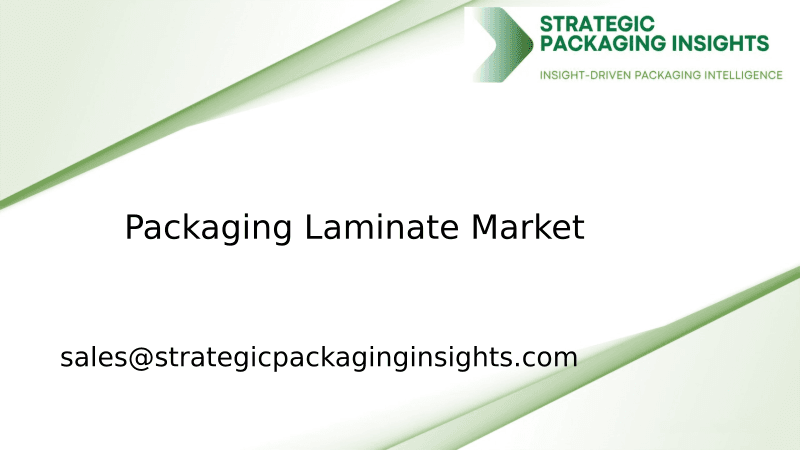
The packaging laminate market was valued at $25 billion in 2024 and is projected to reach $40 billion by 2033, growing at a CAGR of 5.5% during the forecast period 2025–2033.

The recycled cardboard market was valued at $8.5 billion in 2024 and is projected to reach $12.3 billion by 2033, growing at a CAGR of 4.2% during the forecast period 2025-2033.

The holographic lamination film market was valued at $2.5 billion in 2024 and is projected to reach $4.8 billion by 2033, growing at a CAGR of 7.2% during the forecast period 2025-2033.

The Horizontal Continuous Band Sealer market was valued at $1.2 billion in 2024 and is projected to reach $2.3 billion by 2033, growing at a CAGR of 7.1% during the forecast period 2025-2033.

The Orbital Stretch Wrapper market was valued at $1.2 billion in 2024 and is projected to reach $2.5 billion by 2033, growing at a CAGR of 8.5% during the forecast period 2025-2033.

The confectionery and bakery packaging market was valued at $25 billion in 2024 and is projected to reach $40 billion by 2033, growing at a CAGR of 5.5% during the forecast period 2025-2033.

The beverage packaging market was valued at $128 billion in 2024 and is projected to reach $186 billion by 2033, growing at a CAGR of 4.2% during the forecast period 2025–2033.

The North America Freight and Logistics market was valued at $1,200 billion in 2024 and is projected to reach $1,800 billion by 2033, growing at a CAGR of 4.5% during the forecast period 2025–2033.

The Anti-Counterfeiting Packaging market was valued at $105 billion in 2024 and is projected to reach $182 billion by 2033, growing at a CAGR of 6.5% during the forecast period 2025–2033.

The Active and Modified Atmospheric Packaging market was valued at $15.2 billion in 2024 and is projected to reach $25.8 billion by 2033, growing at a CAGR of 6.5% during the forecast period 2025–2033.

The molded fiber packaging market was valued at $7.5 billion in 2024 and is projected to reach $12.3 billion by 2033, growing at a CAGR of 5.8% during the forecast period 2025–2033.

The micro packaging market was valued at $1.2 billion in 2024 and is projected to reach $2.5 billion by 2033, growing at a CAGR of 8.5% during the forecast period 2025–2033.

The Anti-counterfeit Pharmaceuticals Packaging market was valued at $80 billion in 2024 and is projected to reach $150 billion by 2033, growing at a CAGR of 7.5% during the forecast period 2025–2033.

The MDO-PE Film market was valued at $3.5 billion in 2024 and is projected to reach $5.8 billion by 2033, growing at a CAGR of 5.2% during the forecast period 2025–2033.

The compostable pouch market was valued at $1.2 billion in 2024 and is projected to reach $3.5 billion by 2033, growing at a CAGR of 12.5% during the forecast period 2025–2033.

The Smart Packaging market was valued at $23.5 billion in 2024 and is projected to reach $43.5 billion by 2033, growing at a CAGR of 7.2% during the forecast period 2025–2033.

The pharmaceutical glass packaging market was valued at $14.5 billion in 2024 and is projected to reach $22.3 billion by 2033, growing at a CAGR of 4.9% during the forecast period 2025–2033.

The tray liners market was valued at $1.2 billion in 2024 and is projected to reach $2.3 billion by 2033, growing at a CAGR of 6.5% during the forecast period 2025–2033.

The Fan-Out Wafer Level Packaging (FOWLP) market was valued at $1.5 billion in 2024 and is projected to reach $4.2 billion by 2033, growing at a CAGR of 12.5% during the forecast period 2025–2033.

The cartoning machines market was valued at $3.5 billion in 2024 and is projected to reach $5.2 billion by 2033, growing at a CAGR of 4.5% during the forecast period 2025–2033.

The Twin Seal Bags market was valued at $1.2 billion in 2024 and is projected to reach $2.3 billion by 2033, growing at a CAGR of 7.1% during the forecast period 2025–2033.

The Polyvinyl Alcohol (PVA) Films market was valued at $3.5 billion in 2024 and is projected to reach $5.8 billion by 2033, growing at a CAGR of 5.2% during the forecast period 2025–2033.

The Ready-To-Eat Product Packaging market was valued at $95 billion in 2024 and is projected to reach $145 billion by 2033, growing at a CAGR of 4.8% during the forecast period 2025–2033.

The Anti-Counterfeit Packaging market was valued at $105 billion in 2024 and is projected to reach $184 billion by 2033, growing at a CAGR of 6.5% during the forecast period 2025–2033.

The thermoformed skin packaging market was valued at $8.5 billion in 2024 and is projected to reach $13.2 billion by 2033, growing at a CAGR of 5.2% during the forecast period 2025–2033.

The packaging laminate market was valued at $25 billion in 2024 and is projected to reach $40 billion by 2033, growing at a CAGR of 5.5% during the forecast period 2025–2033.

The recycled cardboard market was valued at $8.5 billion in 2024 and is projected to reach $12.3 billion by 2033, growing at a CAGR of 4.2% during the forecast period 2025-2033.

The holographic lamination film market was valued at $2.5 billion in 2024 and is projected to reach $4.8 billion by 2033, growing at a CAGR of 7.2% during the forecast period 2025-2033.

The Horizontal Continuous Band Sealer market was valued at $1.2 billion in 2024 and is projected to reach $2.3 billion by 2033, growing at a CAGR of 7.1% during the forecast period 2025-2033.

The Orbital Stretch Wrapper market was valued at $1.2 billion in 2024 and is projected to reach $2.5 billion by 2033, growing at a CAGR of 8.5% during the forecast period 2025-2033.

The confectionery and bakery packaging market was valued at $25 billion in 2024 and is projected to reach $40 billion by 2033, growing at a CAGR of 5.5% during the forecast period 2025-2033.
